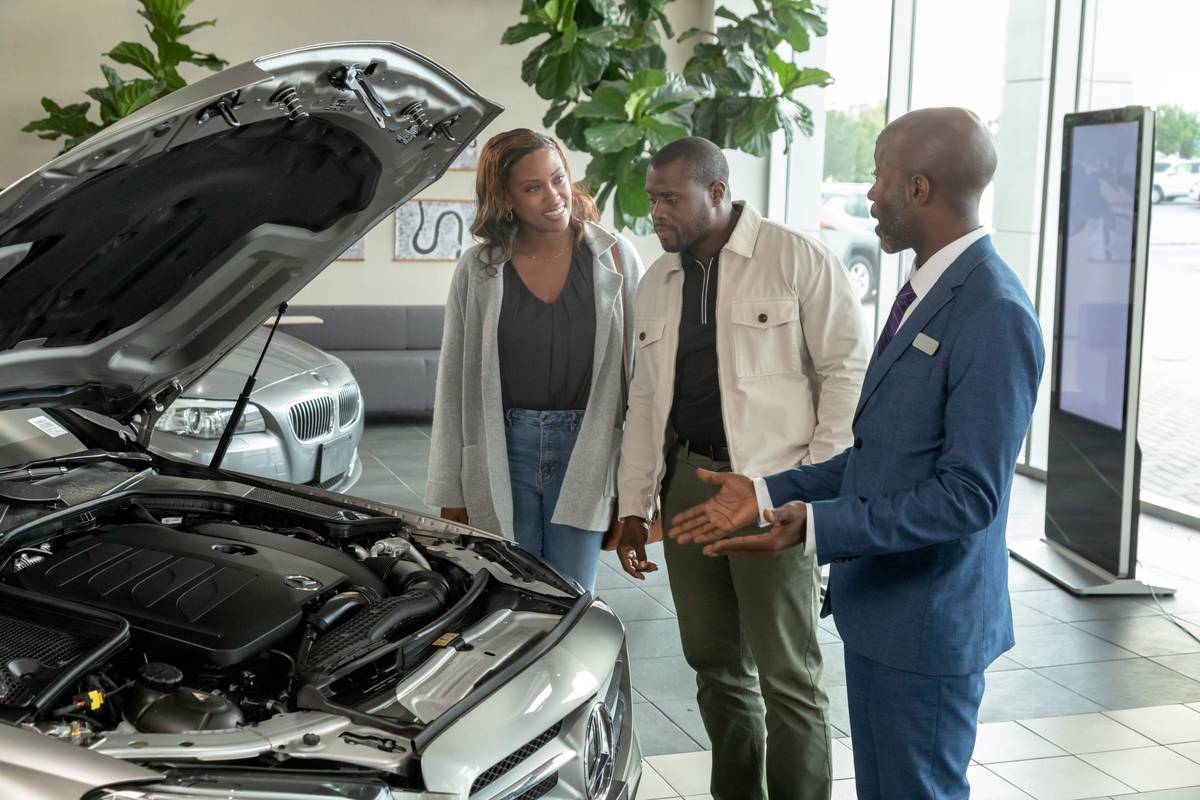
Americans have a deep-seated affection for SUVs, trucks, crossovers, vans, and a myriad of other vehicles, each serving a unique purpose in their daily lives. However, this enthusiasm often wanes considerably when it comes to the actual process of purchasing these vehicles, particularly when dealing with car dealerships—establishments some consumers have dubbed ‘stealerships’ due to frequent negative experiences.
The prevalence of deceptive practices in auto retail has become such a significant concern that the Federal Trade Commission (FTC) last year launched its Combating Auto Retail Scams (CARS) initiative. This new rule is a decisive step towards protecting consumers, aiming to save people more than $3.4 billion and an estimated 72 million hours annually, underscoring the substantial impact these scams have on everyday Americans.
To navigate the complex world of car buying with confidence and avoid becoming another statistic of dealer exploitation, it is crucial for consumers to be well-informed. This article meticulously details common car dealership scams and tricks that continue to ensnare unsuspecting buyers every year, providing practical insights and actionable advice to ensure you enter the buying process with your eyes wide open and your defenses up.

1. **Bait & Switch**One of the most insidious and widely recognized dishonest sales tactics is the bait-and-switch scheme. A car dealership initiates this scam by advertising a highly desirable vehicle at an unusually attractive, often too-good-to-be-true, rate. The primary objective behind such an advertisement is singular: to entice you to visit their showroom, transforming a casual browser into a potential customer within their physical domain.
Once you arrive, having taken the bait, the car salesperson will typically inform you that the specific car advertised was, coincidentally, ‘just recently sold.’ This abrupt change of circumstances leaves the buyer feeling disappointed but still invested in the visit. In another variation of this scheme, the dealer might claim that the appealing price stated in the advertisement was merely a ‘typo,’ effectively invalidating the initial offer.
Following this disheartening news, the salesperson swiftly pivots to their true agenda: attempting to sell you a more expensive car. The intent was never to sell the advertised vehicle at its listed price, but rather to use it as a lure. This tactic leverages your presence and initial interest to steer you towards a vehicle that is more profitable for the dealership, often one you might not have considered initially due to its higher cost.
To safeguard yourself from the bait-and-switch, vigilance is paramount. Always call ahead to inquire if the specific car you are interested in is still available at the listed price. Furthermore, insist on getting confirmation of the vehicle’s availability and its exact price in writing before you make the trip to the dealership. Such proactive steps can help you avoid wasted time and the pressure of a deceptive sales environment.

2. **Focus on Monthly Payments**Car salespersons are often adept communicators, possessing what some might call a ‘gift of gab.’ They will engage you in conversation, skillfully probing to ascertain the specific monthly payment amount you are most comfortable with. This seemingly helpful approach is a calculated maneuver, as it allows them to ‘work their magic’ to present you with payments that align with your expressed budget.
The inherent problem with this focus on monthly payments, particularly when dealing with unscrupulous salespersons, is its potential to mask hidden costs. A dishonest salesperson can artfully embed extra fees, optional add-ons, or inflated prices within the seemingly super-low monthly payments you desire. They achieve this illusion of affordability by simply extending the duration of the loan significantly.
While an extended loan term keeps individual monthly payments low, it invariably leads to a higher total amount paid over the life of the loan, often without the buyer fully realizing the extent of these additional costs. The illusion of meeting a comfortable monthly budget can distract consumers from the overall financial burden they are undertaking. This strategy prioritizes the monthly figure over the actual total expenditure.
To circumvent this common trick, consumers should shift their focus from the monthly payment to the total purchase price of the vehicle, including all associated costs and fees. Before entering into negotiations, it is wise to establish a clear maximum overall price you are willing to pay for the car. By concentrating on the complete financial picture rather than just the installment, you can prevent hidden charges from inflating your investment.

3. **Lowballing Trade-Ins**Many car owners opt to sell their used vehicles privately rather than accept what they perceive as insultingly low trade-in valuations from auto dealerships. This inclination to seek a better return is well-understood by car salespersons, who have developed sophisticated tricks to counteract this common consumer strategy and ensure the trade-in remains within the dealership’s profit margins.
One tactic involves making an initially better-than-expected trade-in offer. This seemingly generous valuation can lull a consumer into a false sense of security, believing they have secured a good deal for their old vehicle. However, the dealership might then, unbeknownst to the buyer, subtly boost their monthly car payments on the new vehicle, effectively clawing back that ‘extra’ trade-in valuation through a hidden increase in the overall cost.
This deceptive practice means that while the trade-in value appears favorable, the consumer ultimately pays more for the new car. It is a manipulation that exploits the buyer’s focus on one aspect of the deal—the trade-in—while silently adjusting another. The true financial benefit of the trade-in is eroded, leaving the buyer at a disadvantage without immediate awareness.
To protect yourself from being lowballed, it is absolutely crucial to conduct thorough due diligence before visiting any dealership. Research the true market value of your trade-in vehicle using trusted resources such as Kelley Blue Book or Edmunds. Armed with an accurate valuation, you can confidently negotiate and identify when a dealer is attempting to undervalue your trade, ensuring you receive a fair price for your old car.

4. **High Over-the-Phone Offer for Trade-Ins**Building upon the complexities of trade-ins, another distinct scam employed by some car dealerships involves offering attractive, often inflated, trade-in valuations over the phone. This tactic is designed specifically to generate excitement and commitment from potential buyers, encouraging them to bring their vehicle to the dealership under the impression of receiving an excellent deal.
However, once the customer arrives at the dealership and their vehicle is physically inspected, the tone often shifts dramatically. The dealership will then typically revise its offer significantly downward. The justification provided is usually that the vehicle’s ‘overall condition’ warrants a lower trade-in valuation than the one initially quoted over the phone, citing newly discovered issues or a more rigorous assessment.
This discrepancy between the initial verbal offer and the final in-person valuation often indicates a deliberate strategy. It is highly probable that the dealership never genuinely intended to honor the high over-the-phone offer. The primary goal was to overcome the initial hurdle of getting the customer to the showroom, where high-pressure sales tactics can then be applied to finalize a deal, regardless of the revised trade-in price.
Consumers should approach any exceptionally high over-the-phone trade-in offers with a healthy dose of skepticism. To minimize this risk, try to obtain a preliminary assessment of your vehicle’s condition and a detailed trade-in offer in writing. While a thorough inspection is always necessary, having initial documentation can serve as leverage and provide clarity, helping you avoid disappointment and potential financial loss.

5. **Odometer Fraud**Despite advancements in technology and consumer protection, odometer fraud regrettably remains a persistent issue in the automotive market. This illegal scam involves someone deliberately tampering with a vehicle’s odometer to display a reading that is significantly lower than the actual mileage the car has accrued. The intent is to misrepresent the vehicle’s age and wear, thereby increasing its perceived value.
The scale of this crime is alarming, with the National Highway Traffic Safety Administration (NHTSA) estimating that over 450,000 vehicles are sold annually with incorrect odometer readings. This widespread deception collectively costs American car buyers upwards of $1 billion each year, primarily in the form of unexpected repair and maintenance expenses that arise from purchasing a vehicle with hidden excessive wear.
Identifying odometer fraud requires keen observation and diligence. Consumers should be wary of vehicles that display unbelievably low mileage for their age, as this is a primary red flag. Other indicators might include signs that the car does not have its original tires, suggesting significant use beyond what the odometer indicates, or a disconnect between the interior wear and tear and the reported mileage.
To protect against this costly scam, it is imperative to shop only at reputable dealerships that have a proven track record of honesty and transparency. If you encounter a vehicle, for instance, a 1980 sedan, advertised with an incredibly low 35,000 total miles, you should be highly suspicious, especially given that Americans drive an average of 14,263 miles annually. While a super-low mileage reading doesn’t automatically confirm fraud, it mandates thorough investigation. Always perform your due diligence, ask pertinent questions about the vehicle’s history, and obtain a comprehensive vehicle history report, such as those from Carfax, to verify mileage consistency before making a purchase.

6. **Vague Contracts/Rushed Paperwork**Underhanded car dealerships frequently employ the tactic of using vague and convoluted contracts to their advantage. These agreements are often drafted with language and terminology that the average person is unfamiliar with, deliberately designed to confound consumers and obscure critical details. The complexity of these documents can make it challenging for buyers to fully understand the terms and conditions they are agreeing to.
Compounding this issue, some dealerships also utilize ‘rushed paperwork’ tactics. Salespersons may attempt to hurry buyers through the signing process, creating a false sense of urgency and discouraging a careful review of the documents. This pressure can lead consumers to overlook crucial clauses, hidden fees, or unfavorable terms, effectively signing away their rights or agreeing to costs they would otherwise reject.
The consequences of signing vague contracts or rushing through paperwork can be severe, ranging from unexpected fees and unwanted add-ons to inadvertently agreeing to a lease agreement when the intention was to purchase the vehicle outright. As the context warns, ‘If you see the word “lease” anywhere in the contract, it’s a lease agreement,’ highlighting the importance of every detail.
The most effective defense against this scam is steadfast vigilance and a commitment to thoroughness. Before affixing your signature to any contract, always ask questions until you fully comprehend every clause and term. Never sign a document with the intention of asking questions later; clarify everything upfront. It is paramount to resist any pressure to rush, taking all the time necessary to carefully read through every document, even if it means asserting your right to do so to an impatient dealer. Furthermore, ensure that all promises, agreements, and details are explicitly stated in writing, as ‘Putting everything in writing — no exceptions — protects you and the car dealership.’




